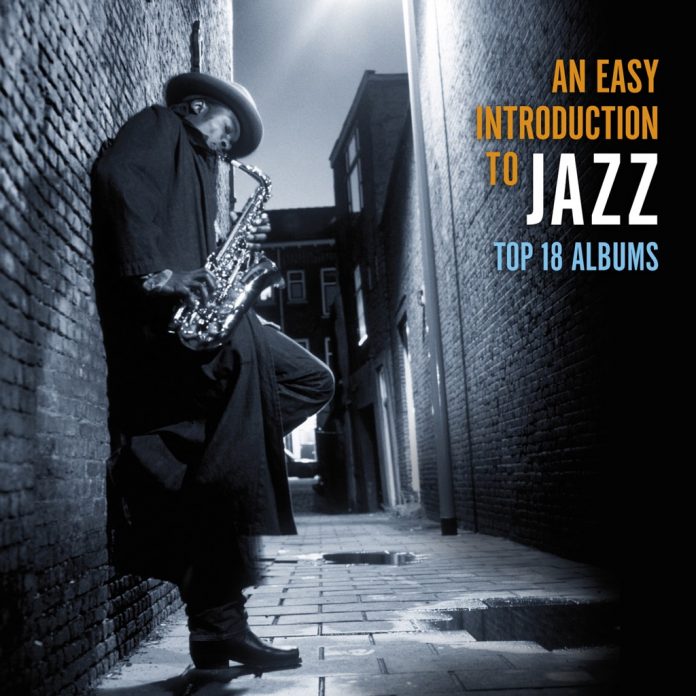What’s easy about an “easy” introduction to jazz? Does it mean an unimpeded way into the subject or the dismissal of any problems of choice? The facts of jazz history are established and agreed, given new findings and re-evaluations. As with most other histories, there’s also a social background from which emerge battalions of personalities, a lot of them seminal.
But history couldn’t have been a serious consideration in this choice of 18 representative albums, despite that history’s having been tracked by the recording industry from the inception of both. All were laid down between roughly the mid-1950s and the early 1960s, though the earliest is by Thelonious Monk (1952). In discounting the 36 years since the first jazz record, the list therefore excludes the Louis Armstrong Hot Five and Hot Seven, Jelly Roll Morton and the first recorded outfit itself, the Original Dixieland Jazz Band.
Nor is there any Duke Ellington, Benny Goodman or Charlie Parker. Nothing after the 1960s either. So we are missing about 40 years at the start and over 50 after the later cut-off. That’s a lot of jazz. Maybe the set is aimed at newcomers to the subject who may be familiar with what’s being played today and are wondering where it all originated and developed.
While historically significant albums are here – Miles Davis’s Kind Of Blue, Billie Holiday’s Lady Sings The Blues, John Coltrane’s Giant Steps, and Dave Brubeck’s Time Out, the others, sometimes sub-genre, are ones that proved to be popular as well as important. No-one else other than Lady Day is singing the blues. Although Count Basie’s The Atomic Mr Basie sold, it never surpassed its immediate predecessors, and an album such as Ella And Louis by Armstrong and Ella Fitzgerald always seemed designed to bring two widely-known stars together in an act of veneration. The 18 albums are presented on 10 discs. Four of the albums are duo collaborations, three feature singers (including Chet Baker) and the others are by small or small-ish groups. Basie’s 1957 outfit the only large one.
That said, there are no duds here. The 18 were cut at the time when LPs arrived and recorded sound was improving fast. The excellent 20-page introductory booklet, uncredited, includes updated liner notes. For the fans who bought at the time and never acquired the CD versions, this is a super replacement. What’s more, a couple of albums offer bonus tracks, incuding the famous So What take by the Miles Davis group recorded on the Robert Herridge Theatre TV show with a rearranged personnel.
Discography
Album titles: (1) Somethin’ Else; (2) Groove Yard; (3) Kind Of Blue; (4) Ella And Louis; (5) Giant Steps; (6) Study In Brown; (7) Chet Baker Sings; (8) Oscar Peterson Plays The Cole Porter Song Book; (9) The Art Tatum-Ben Webster Quartet; (10) The Thelonious Monk Trio; (11) Lady Sings The Blues; (12) Waltz For Debby; (13) Moanin’; (14) Tenor Madness; (15) Time Out; (16) The Atomic Mr Basie; (17) The High And Mighty Hawk; (18) Getz Meets Mulligan In Hi-Fi (840.11)
(1) Julian “Cannonball” Adderley (as); Miles Davis (t); Hank Jones (p); Sam Jones (b); Art Blakey (d). New Jersey, 9 March 1958.
(2) Wes Montgomery (g); Buddy Montgomery (p); Monk Montgomery (b); Bobby Thomas (d). New York, 3 January 1961.
(3) Miles Davis (t); Julian “Cannonball” Adderley (as); John Coltrane (ts); Bill Evans, Wynton Kelly (p); Paul Chambers (b); Jimmy Cobb (d). New York, March – April 1959, 26 May 1958.
(4) Ella Fitzgerald (v); Louis Armstrong (t, v); Oscar Peterson (p); Herb Ellis (g); Ray Brown (b); Buddy Rich, Louis Bellson (d). Hollywood, 16 August 1956, July-August 1957.
(5) John Coltrane (ts); Tommy Flanagan (p); Paul Chambers (b); Art Taylor (d). New York, May and December 1959.
(6) Clifford Brown (t); Harold Land (ts); Richie Powell (p); George Morrow (b); Max Roach (d). New York, 23-25 February 1955.
(7) Chet Baker (t, v), Russ Freeman (p, celeste); Shelly Manne (d); Jimmy Bond (b); and others. Los Angeles, 1953, 1954, 1956.
(8) Oscar Peterson (p); Ray Brown (b); Ed Thigpen (d). Chicago, July-August 1959.
(9) Art Tatum (p); Ben Webster (ts); Red Callender (b); Bill Douglass (d). Los Angeles, 11 September 1956.
(10) Thelonious Monk (p); Gary Mapp (b); Art Blakey (d); and others. New York, October-December 1952; New Jersey, 22 September 1954.
(11) Billie Holiday (v); Charlie Shavers (t); Wynton Kelly (p); Kenny Burrell (g); Aaron Bell (b); Lennie McBrowne (d); and others. New York, 6-7 June 1956, Los Angeles, 3 September 1954.
(12) Bill Evans (p); Scott LaFaro (b); Paul Motian (d). New York, 25 June 1961.
(13) Lee Morgan (t); Benny Golson (ts); Bobby Timmons (p); Jymie Merritt (b); Art Blakey (d). New Jersey, 30 October 1958.
(14) Sonny Rollins, John Coltrane (ts); Red Garland (p); Paul Chambers (b); Philly Joe Jones (d). New Jersey, 24 May 1956.
(15) Paul Desmond (as); Dave Brubeck (p); Eugene Wright (b); Joe Morello (d). New York, June-July-August 1959.
(16) Count Basie (p); Joe Williams (v); Joe Newman (t); Frank Foster (ts, arr); Freddie Green (g); Eddie Jones (b); Sonny Payne (d); Neal Hefti (arr). New York, 21-22 October 1957.
(17) Coleman Hawkins (ts); Buck Clayton (t); Hank Jones (p); Ray Brown (b); Mickey Sheen (d). New York, 18-19 February 1958.
(18) Stan Getz (ts, bar); Gerry Mulligan (bar, ts); Lou Levy (p); Ray Brown (b); Stan Levey (d). Los Angeles, 12 October 1957.
New Continent 648047















